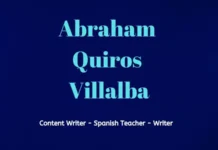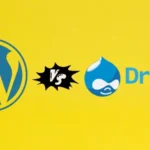Within e-learning, the Scorm standard (Sharable Content Object Reference Model) plays a fundamental role when offering all types of online training, ensuring that the software used in the courses can communicate with the LMS tool.
Scorm provides a familiar environment for the development of e-learning content, thus making it easier for all training professionals to create easily reproduced content on different teaching platforms.
What are the characteristics of Scorm?
The Scorm standard is defined with a series of its own characteristics, among which we can highlight:
Multi-platform
The leading LMS (Learning Management System) learning management systems on the market, such as Moodle or Chamilo, are compatible with Scorm. The resources that are created under this standard must be able to be reproduced and be accessible from this type of platform.
Accessibility
This format implies that the content is always available, regardless of the time or the device used. Storm reinforces the concept of distance or online teaching, where the student has a more significant margin to manage their time, so the content and functionalities of the training must always be available.
For this reason, Scorm content must be designed to be displayed in a web browser (Chrome, Edge, Safari, Opera or Firefox, for example), thus ensuring that it works on any operating system (Windows, Linux, Android, or Mac Os.
Reuse
Scorm fixes the training content under a reuse method; all the ranges used for specific training can be reused in other activities independently.
Also Read: Keys to Increase the Profits of Companies
This way, costs are saved, and valuable material is used that can be of great value in other courses. The courses or modules under this standard can be packaged to take them and imported to other different platforms.
High level of organization
With the Scorm standard, the court’s structure and the content’s organisation become critical points within the training. It promotes the idea of creating environments that are easy to use and provide an architecture recognizable by users so that the learning curve is as smooth as possible.
In Scorm, it is essential to divide the course or training into more minor subjects so that the student can pass them more affordably. This modular system helps to approach topics more efficiently and to understand and assimilate them, investing much less time.
Student follow-up
The Storm model focuses on the student, being the centre of all the training decisions made. Each student must have registered all the activities they carry out during their training and interaction with the platform.
All this well-classified and ordered information is beneficial for the student and the company or person that offers the course.
Fight Against Obsolescence
The Scorm standard emphasises developing content that can avoid rapid obsolescence, providing tools and creating structures that make it easy to update content or implement new features.
Resource Optimization
A critical point of Scorm is related to cost reduction. Online training must be profitable, so the design and development of movement must be addressed from the optimal use of resources.
For example, by providing utilities so users can better manage their time, training completion times will be reduced, resulting in cost savings.
Combining criteria to establish some bases or good practice guides to follow in tele-learning takes work. Storm breaks this dynamic with a standard that sets the necessary guidelines for e-learning to be more efficient and of better quality for everyone.
Also Read: How and Why to Create a Behavioural Database










![Imginn Instagram Story and Photos Anonymous Viewer Tool [Free] Imginn](https://www.iblogtech.com/wp-content/uploads/2023/09/imginn-150x150.webp)



